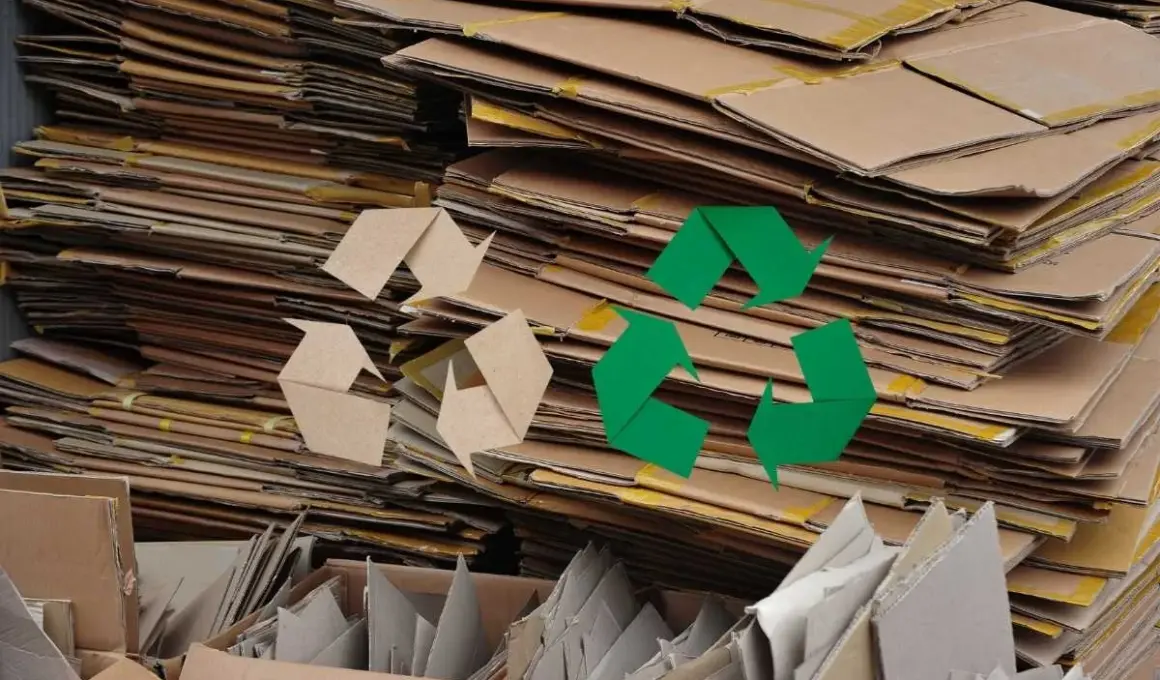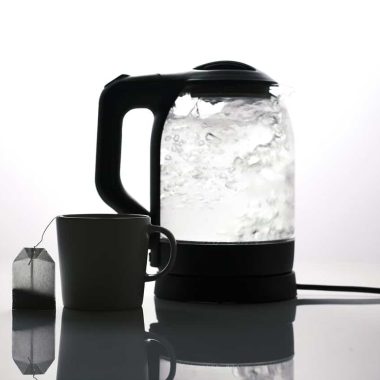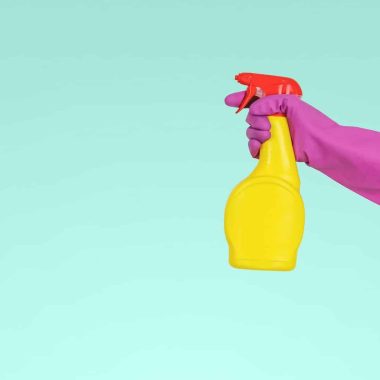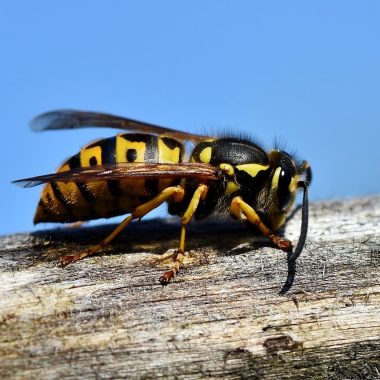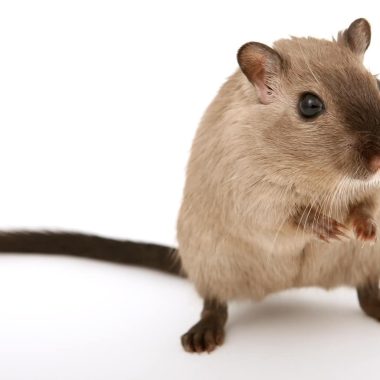Cardboard boxes are everywhere in our lives – from packaging our online orders to storing our belongings.
When we’re done with them, many of us wonder what happens next.
Cardboard is biodegradable and will naturally break down in compost conditions within one year because it’s made from natural materials like cellulose fibers.
However, not all cardboard breaks down the same way. While cardboard is compostable in typical conditions, it doesn’t biodegrade effectively in water.
This creates some confusion about the best way to dispose of it.
The environmental impact of cardboard also depends on whether it has special coatings or treatments.
The good news is that cardboard is not only biodegradable but also 100% recyclable, with the UK achieving an impressive recycling rate of 92.9%.
This makes it one of the more eco-friendly packaging materials available today, especially when compared to plastic alternatives that can take hundreds of years to decompose.
What Cardboard Is Made Of
Cardboard is primarily made from plant fibers derived from wood pulp.
These fibers come from trees that are processed into thin sheets of paper that form the basis of cardboard products.
There are different types of cardboard, with corrugated cardboard being the most common.
Corrugated cardboard consists of three layers: two flat liners with a wavy fluted sheet sandwiched between them.
This structure gives the material its strength while keeping it lightweight.
The manufacturing process begins with wood chips that are broken down into pulp.
This pulp is then refined, pressed, and dried to create the paper sheets that will become cardboard.
Some cardboard products contain recycled materials. Many manufacturers use a mixture of virgin and recycled fibers to create new cardboard, which helps reduce environmental impact.
For specialized purposes, cardboard may receive additional treatments.
Some varieties have wax coatings for moisture resistance, while others might contain additives for strength or specific properties.
Plain cardboard is made of natural materials, which is why it’s 100% biodegradable.
However, some glossy cardboard products may contain either kaolin clay (natural) or plastic coatings (synthetic).
The composition of cardboard makes it an environmentally friendly material when compared to plastic packaging alternatives.
Its natural fiber base allows it to break down naturally in the environment.
Is Cardboard Biodegradable At Home?
Yes, cardboard is naturally biodegradable in home environments.
When placed in the right conditions, it breaks down over time without leaving harmful residues behind.
Most cardboard items decompose within 2-3 months in a backyard compost bin.
This process happens faster when the cardboard is torn into smaller pieces and exposed to moisture, microorganisms, and oxygen.
The biodegradability of cardboard depends on several factors:
- Moisture level: Damp conditions speed up decomposition
- Temperature: Warmer environments accelerate the process
- Presence of microorganisms: Bacteria and fungi help break down the fibers
- Type of cardboard: Plain cardboard degrades faster than waxed or laminated versions
Homeowners can easily test cardboard biodegradability by placing a piece in soil and checking its condition every few weeks.
The cardboard should gradually soften, become fragile, and eventually disappear.
While cardboard can be composted at home, it’s important to note that not all cardboard is created equal.
Food-contaminated cardboard biodegrades well in home settings, but items with plastic coatings or heavy dyes may not break down completely.
For optimal home biodegradation, remove any tape, labels, or plastic elements from cardboard before composting.
These non-biodegradable components can remain in the soil long after the cardboard has disappeared.
Tearing cardboard into smaller pieces helps it break down faster in home compost systems.
This increases the surface area and gives microorganisms more points of entry to begin decomposition.
How Long It Takes To Break Down
Cardboard breaks down at different rates depending on several factors. Regular corrugated cardboard typically takes about 2 months to decompose under ideal conditions.
Environmental factors play a major role in decomposition time.
Moisture, temperature, and exposure to microorganisms all affect how quickly cardboard returns to nature.
Different types of cardboard decompose at varying rates:
| Type of Cardboard | Decomposition Time |
|---|---|
| Regular cardboard | 2-3 months |
| Corrugated cardboard | 2-5 years |
| Wax-coated cardboard | 5+ years |
| PE-lined paper products | Decades |
In garden settings, cardboard breaks down more quickly. When used in no-dig gardens, cardboard typically begins breaking down within a couple of months and may be completely gone in 4-6 months.
Landfill conditions significantly slow the process. Without adequate oxygen and beneficial microbes, even biodegradable materials take longer to decompose.
Water-resistant cardboard presents special challenges. These water-resistant materials may take up to five years to fully decompose due to their protective coatings.
The decomposition process begins with the breakdown of cellulose fibers by bacteria and fungi.
These microorganisms gradually convert the cardboard into simpler compounds that return to the soil.
Shredding or tearing cardboard accelerates decomposition by increasing the surface area exposed to microbes and environmental elements.
Composting Cardboard In Your Yard Or Garden
Cardboard is an excellent material for composting and makes up over 31 percent of landfills.
Adding it to your compost pile keeps it out of waste streams while creating valuable organic matter for your garden.
Not all cardboard is compostable. Plain cardboard without glossy coatings is best for composting.
Corrugated boxes are an excellent carbon source for your compost pile, while shiny or plastic-coated cardboard should be avoided.
To prepare cardboard for composting:
- Remove tape, staples, and labels
- Cut or tear into small pieces (4-6 inches)
- Moisten it slightly before adding to compost
Cardboard provides the necessary “browns” (carbon) in the composting process.
For best results, maintain a ratio of about 3 parts carbon (cardboard) to 1 part nitrogen (food scraps, grass clippings).
People often wonder about printed cardboard. Cardboard with standard ink is generally safe to compost, but avoid boxes with excessive colored inks or coatings.
Cardboard can also be used as a weed barrier in garden beds.
Simply lay flat pieces directly on the soil, wet them thoroughly, and cover with compost or mulch.
The cardboard will break down over time while suppressing weeds.
Composting typically takes 3-6 months for cardboard to fully decompose, depending on conditions.
Shredded pieces break down faster than whole sections.
Eco-Friendly Ways To Reuse Or Dispose Of Cardboard
Cardboard is a versatile material that can be handled in several environmentally responsible ways after use.
Instead of simply throwing it away, consider these eco-friendly alternatives.
Recycling is often the best option for cardboard that’s still in good condition. When not contaminated with water, food, or oil, cardboard can be recycled easily. Simply break down boxes, remove any tape or labels, and place them in recycling bins.
Composting provides another excellent disposal method. Cardboard is naturally compostable, making it a valuable addition to garden compost. Shred the cardboard first to help it break down faster.
Creative reuse ideas for cardboard:
- Storage containers for home organization
- Arts and crafts projects
- Garden mulch or weed barriers
- Pet toys or shelters
- Shipping padding for future packages
Cardboard can also be transformed into fire starter logs for camping or backyard fires. Simply roll up soaked cardboard tightly and tie it with twine.
For excess cardboard in good condition, donation is a thoughtful option.
Schools, community centers, and people who are moving often appreciate clean, sturdy boxes.
When deciding between recycling and composting, experts suggest that recycling is generally better for the environment, though this may depend on local recycling programs’ efficiency.
Remember that reusing cardboard extends its lifecycle and reduces the need for new materials, making it one of the most environmentally responsible choices.
Conclusion
Cardboard is indeed biodegradable under optimal conditions, making it a more environmentally friendly packaging option compared to plastic alternatives.
Its ability to break down naturally helps reduce long-term environmental impact.
However, the biodegradation process depends heavily on several factors.
Contaminated cardboard with food, oil, or certain coatings will degrade much slower and may release harmful substances.
Recycling remains the best option for cardboard disposal, with impressive rates of 92.9% in some regions. This practice saves trees, energy, and reduces greenhouse gas emissions.
For unsuitable recycling pieces, composting offers another eco-friendly solution.
Most cardboard will decompose within two months when properly composted.
The environmental benefits of cardboard are significant when handled properly:
- Renewable resource from managed forests
- Biodegradable within weeks to months
- Highly recyclable with established infrastructure
- Lower carbon footprint compared to plastic alternatives
When cardboard ends up in landfills, it releases methane during decomposition, contributing to greenhouse gas emissions.
Consumers should prioritize recycling or composting whenever possible.
By understanding cardboard’s biodegradable nature and making informed disposal choices, individuals can significantly reduce their environmental impact while still enjoying the practical benefits this versatile material offers.
